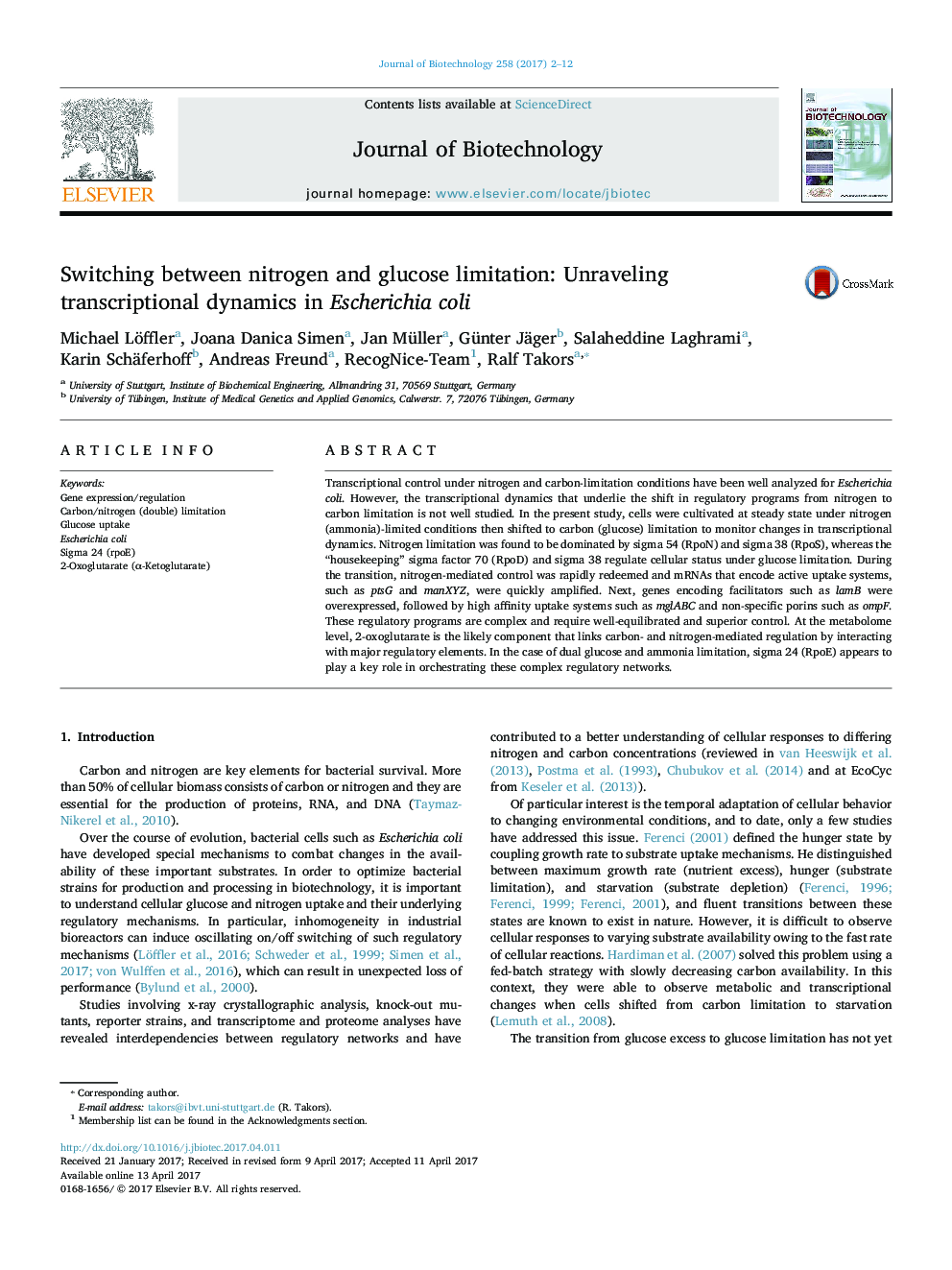| Article ID | Journal | Published Year | Pages | File Type |
|---|---|---|---|---|
| 6452013 | Journal of Biotechnology | 2017 | 11 Pages |
â¢Special chemostat cultivation was used to enable slow transition from nitrogen to glucose limitation.â¢This setup allowed us to reveal the sequential transcriptional activation of glucose transport systems.â¢2-oxoglutarate links glucose and ammonia regulation in Escherichia coli.â¢Sigma24 plays a key role to orchestrate the regulatory network under N-C dual limitation.
Transcriptional control under nitrogen and carbon-limitation conditions have been well analyzed for Escherichia coli. However, the transcriptional dynamics that underlie the shift in regulatory programs from nitrogen to carbon limitation is not well studied. In the present study, cells were cultivated at steady state under nitrogen (ammonia)-limited conditions then shifted to carbon (glucose) limitation to monitor changes in transcriptional dynamics. Nitrogen limitation was found to be dominated by sigma 54 (RpoN) and sigma 38 (RpoS), whereas the “housekeeping” sigma factor 70 (RpoD) and sigma 38 regulate cellular status under glucose limitation. During the transition, nitrogen-mediated control was rapidly redeemed and mRNAs that encode active uptake systems, such as ptsG and manXYZ, were quickly amplified. Next, genes encoding facilitators such as lamB were overexpressed, followed by high affinity uptake systems such as mglABC and non-specific porins such as ompF. These regulatory programs are complex and require well-equilibrated and superior control. At the metabolome level, 2-oxoglutarate is the likely component that links carbon- and nitrogen-mediated regulation by interacting with major regulatory elements. In the case of dual glucose and ammonia limitation, sigma 24 (RpoE) appears to play a key role in orchestrating these complex regulatory networks.
